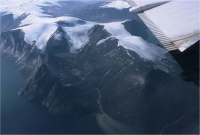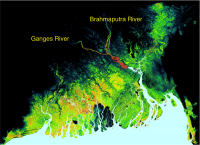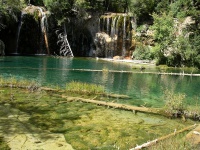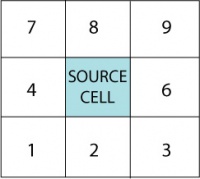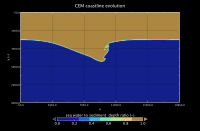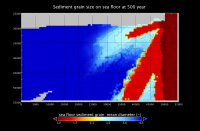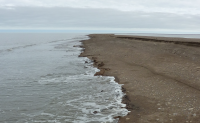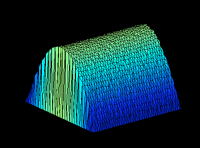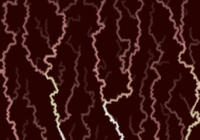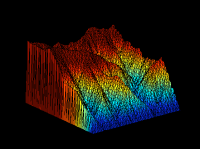Labs portal: Difference between revisions
No edit summary |
No edit summary |
||
| Line 110: | Line 110: | ||
|- | |- | ||
|valign=top|[[File:RioPuercoTopo2006.png| 200px | left | link=TeacherWS2015]] | |valign=top|[[File:RioPuercoTopo2006.png| 200px | left | link=TeacherWS2015]] | ||
|valign=top| '''River Dynamics and Vegetation labs | |valign=top| '''River Dynamics and Vegetation labs '' | ||
|valign=top| ''K6-12 and Undergraduates'' | |||
These are lectures and hands-on labs for K6-12 classrooms. Labs look at the complex interactions of the biosphere and hydrosphere. Vegetation influence river dynamics during floods [[TeacherWS2015|Materials are posted here ]]. | These are lectures and hands-on labs for K6-12 classrooms. Labs look at the complex interactions of the biosphere and hydrosphere. Vegetation influence river dynamics during floods [[TeacherWS2015|Materials are posted here ]]. | ||
|- | |- | ||
Revision as of 15:53, 29 September 2015
Labs
Want to contribute your own lab? Please contact irina.overeem@colorado.edu
| Labs | ||
|---|---|---|
| Get Started with WMT
This tutorial teaches you how to use CSDMS Web Modeling Tool; it is focused on how to use the WMT software. WMT_tutorial | ||
| Visualize NetCDF Output from WMT
This tutorial teaches you how to visualize output from CSDMS Web Modeling Tool; it shows examples of NetCDF output and how to plot them in Panoply . Visualize NetCDF Output from WMT | ||
| Sediment Supply to the Global Ocean
Investigate river sediment supply to the ocean by exploring the effects of climate changes on river fluxes. We also look at the effect of humans on rivers: the building of a reservoir. Spreadsheet Lab or the HydroTrend Modeling with WMT | ||
| Future Sediment Flux of the Ganges River
Investigate river sediment supply of the monsoon-driven Ganges River. Exploring the effects of future climate changes. We validate model against observations and discuss uncertainty. Ganges Modeling with WMT | ||
| Modeling River Plumes
Riverwater and its suspended sediments will form a hypopycnal sediment plume. We will use a component called PLUME to investigate the behavior of these sediment plumes. Plume Modeling with WMT
| ||
| Hydrological Processes
These spreadsheet exercises for undergraduate students explore the main components of the water balance: precipitation, evaporation and infiltration.
Excercise on Evaporation | ||
| Sinking Deltas
Deltas experience rapid sea level rise. These spreadsheet exercises explore thermal expansion, global sea-level rise and local relative sea-level rise and its causes in selected major deltas. For undergraduate level classes. Notes for students and instructors and spreadsheet excercise | ||
| Flow Routing
Learn about flow routing over a landscape and basic algorithms for numerical modeling of combined hillslope and river sediment transport processes. Excercise on flow routing | ||
| River-Delta Interactions
Explore coastal processes by 1) a spreadsheet lab or 2) an advanced modeling lab using the CEM model. We look at the effects of waves and river avulson on the coastline. Spreadsheet Lab or the CEM WMT modeling| | ||
| Stratigraphic Modeling with Sedflux2D
SedFlux builds stratigraphy by combining fluvial processes, plume dynamics, ocean waves and many more. This lab teaches you about Sedflux 2d and gets you started building 2D profile simulations of sea level change. Stratigraphy Modeling in 2Dwith WMT | ||
| Stratigraphic Modeling with Sedflux3D
SedFlux builds stratigraphy by combining fluvial processes, plume dynamics,avulsion, compaction and many more. This lab teaches you about Sedflux 3d and gets you started with sea level change and avulsions. Stratigraphy Modeling in 3D with WMT | ||
| Landscape Evolution Experiments
WILSIM is a Web-based Interactive Landform Simulation Model. Look at the effects of landscape geometry, climate and tectonics and see how the Grand Canyon forms over time. WILSIM runs through your browser here | ||
| Coastal Engineering Experiments
Explore waves, surge, tides and sediment transport with hands-on exercises and simple model visualizations.
Find them here Coastal Processes Toolbox of Tony Dalrymple | ||
| Simple Sediment Transport Models
Here we are collecting sediment transport modeling exercises | ||
| Landscape Evolution Modeling with CHILD, Part 1
| ||
| Landscape Evolution Modeling with CHILD, Part 2
| ||
| Landscape Evolution Modeling with CHILD, Part 3
| ||
| 'River Dynamics and Vegetation labs | K6-12 and Undergraduates
These are lectures and hands-on labs for K6-12 classrooms. Labs look at the complex interactions of the biosphere and hydrosphere. Vegetation influence river dynamics during floods Materials are posted here . | |
| Earth Science Models for K6-12
The PhET project at CU Boulder has built numerous interactive simulations to which CSDMS scientists contribute. These are for K6-12 classrooms! PhET Earth Science simulations are found here.
| ||


